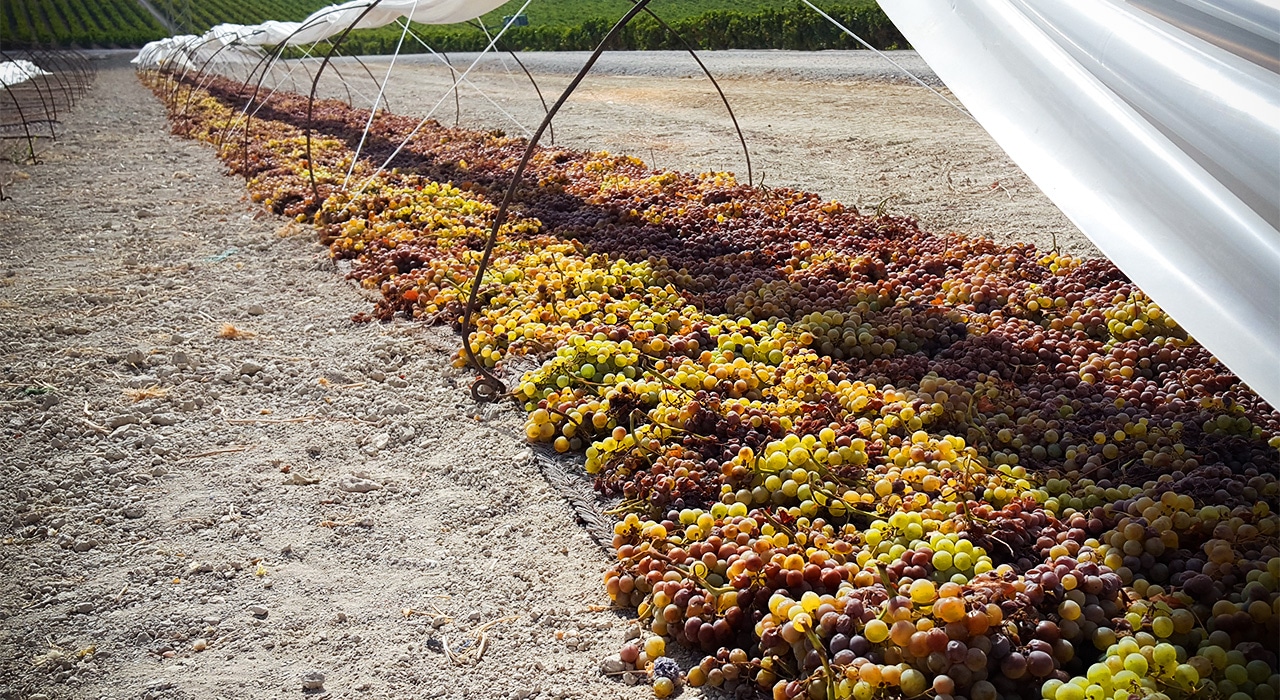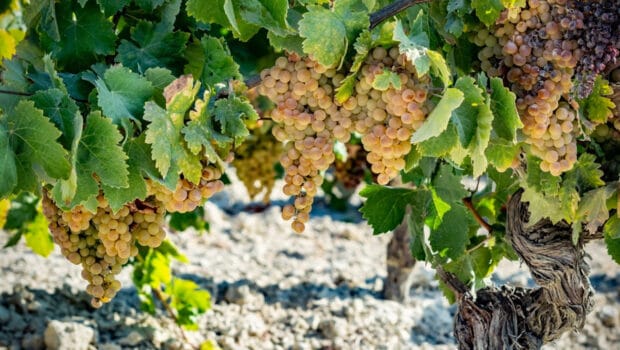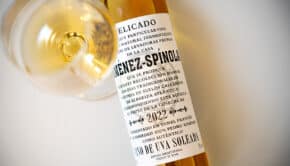Pedro Ximénez grape: history and character
The white Pedro Ximénez grape is closely linked to Spain and specifically the Andalusian region. We all know it for its luscious sweet wines, and you have probably heard the story of a soldier bringing it to Spain, but is this really true?
History of the Pedro Ximénez grape
The origins of the grape are still not entirely clear and over the years different theories have been proposed. In 1661 a German ampelographer Philip Jacob Sachs von Lewenheim claimed the grape originated in Madeira or the Canary Islands. This may have been motivated by the fact that so many fortified wines passed through these islands on their journeys to the Americas. He thought PX grapes were then brought to the Rheingau, Rheinhessen and Mosel regions.
It is there that they were picked up by a Spanish soldier Pedro Ximén (Peter Siemens in German) after serving Charles V in The Netherlands. On his way back to Sevilla, he took some vines and propagated them in Andalusia. The link to Germany had a wide following in wine writing – it was even endorsed by Spanish writers like Valcárcel. It even led to the assumption that Pedro Ximénez was related to the Elbling and Riesling grape. This popular theory lives on today, even among winemakers in Jerez who stress the fact that PX can express some hydrocarbons just like Riesling. However modern DNA evidence has shown that there is no scientific link to any of the German grapes.
Dutchman Pieter Cemeynes

The oldest Spanish mention of the grape dates back to 1618. A text by the Spanish writer Vicente Espinel talks of a famous Pedro Ximénez de Malaga wine. However an even older reference was discovered in The Netherlands. Just a few years ago Mariella Beukers (in her book Wijnkronieken) discovered a pricelist used in the Amsterdam wine market in 1609. Surprisingly, this already mentions a wine called Pieter Cemeynes (image to the right). Another document from 1628 mentions Pieters Semeijnen as the best wine in a Rotterdam cellar. Dutch writers believe they can link the grape to Pieter Symonsz, a trader from Rotterdam who travelled to Cordoba around 1600.
In any case the famous Ordenanzas del vino, an early regulation of the grape harvest in Jerez (1483), doesn’t mention the Pedro Ximénez grape. It seems that the grape must have been given the name at a later point. However we do know that the agronomist Roxas Clemente mentions that in 1784 Pedro Ximénez represented 26% of all plantings in the sherry region.
Modern insights: Gibi grape
Even though the name Ximénez / Siemens could have its origins in the North, ampelographers now seem to agree that PX is a native Andalusian grape. The DNA analysis from 2007 shows it is an offspring of the Arabic grape Gibi which would have been introduced by the Moors during the Al-Andalus period. As such the grape is a sibling to the Alarije grape from Extremadura. Some suggest that the village of Jiménez, close to Sanlúcar de Barrameda, could be related to the name of the grape, but I think they simply relate to a fairly common surname which originated in the Basque lands.
Distribution of Pedro Ximénez
Pedro Ximénez is now grown primarily in Montilla-Moriles, where it occupies over 70% of the vineyards. Wineries in this zone use it for all types of sherry-style wines. While it is best known for sweet wines, they also use it for dry Fino, Amontillado, Palo Cortado and Oloroso styles, as well as dry white wines. In the sherry region itself the grape is exclusively used for sweet monovarietal wines, and as a blending component in Medium and Cream sherry.
There is of course one exception of the bodega Ximénez-Spínola who focus on PX and also make dry styles of wine from it. Essentially the rules of the D.O. don’t restrict the use of PX to sweet styles.
Outside of Andalusia, Pedro Ximénez is also planted in Valencia, Castilla La Mancha and Catalunya. We also find it in Portugal (under the name Perrum), Chile (Pedro Jimenez), Argentina, California, Peru (pisco)… Since 1832 it is also planted in Australia (where it is at the base of the Apera wines).

Characteristics of PX grapes
Pedro Ximénez vines are quite vigorous, with high yields (4-5 kg). The clusters are large but quite heterogenous. Grapes are slightly elliptical, have a very thick skin and a naturally low acidity. Despite this low acidity, it withstands oxidation well and keeps its fruity aromatics. Grapes are very sensitive to botrytis, downy mildew and other viticultural hazards.
PX is closely linked to the practice of asoleo, in which grapes are dried in the sun. They are left outside on straw mats for a few hours to a few days. It lets the water evaporate and concentrates other flavours, almost turning them into raisins. The liquid that is extracted afterwards is very thick and dark, and can only be partially fermented because of the high sugar content. It gives you a wine with a high residual sugar level (typically 200-500 g/l) and dark aromas of toffee, raisins and chocolate. Older wines often have some spice, liquorice and coffee.
The fact that the grapes are relatively prone to rotting led to an exception in the D.O. Jerez-Xérès-Sherry, allowing PX grapes and even PX base wines to be imported from nearby denominations like Montilla-Moriles. The climate there is drier, with less humid nights, making it easier to leave the grapes outside during the asoleo process. As long as the wines are then transferred and matured within the sherry region, these Pedro Ximénez wines can still be called sherry wines.











